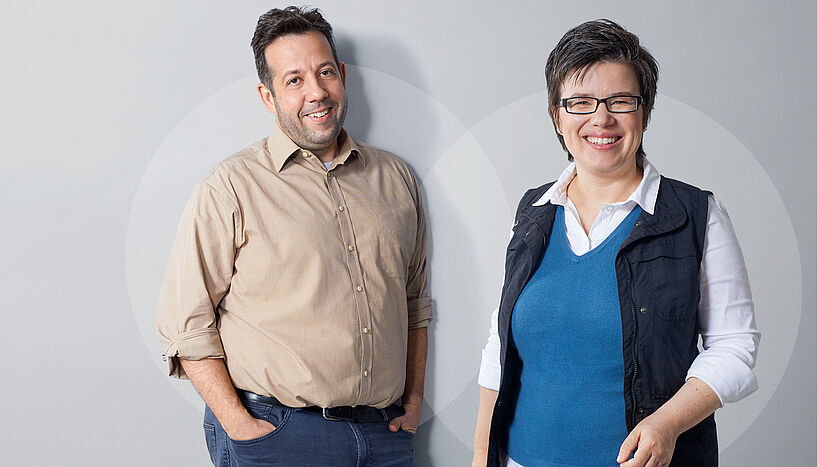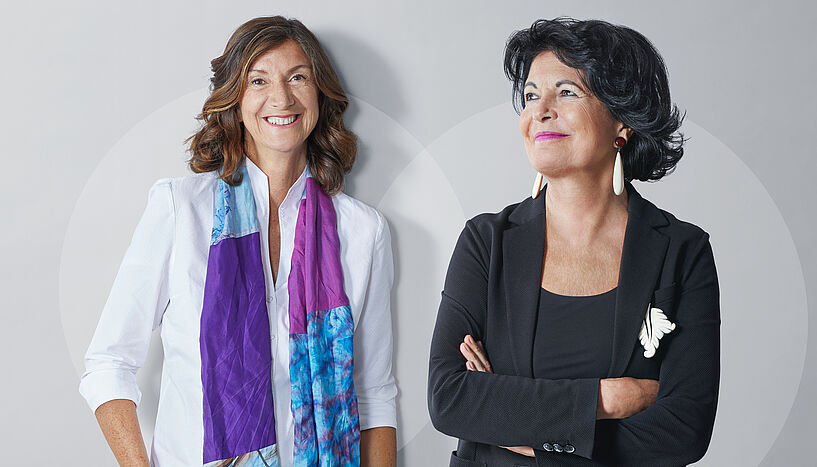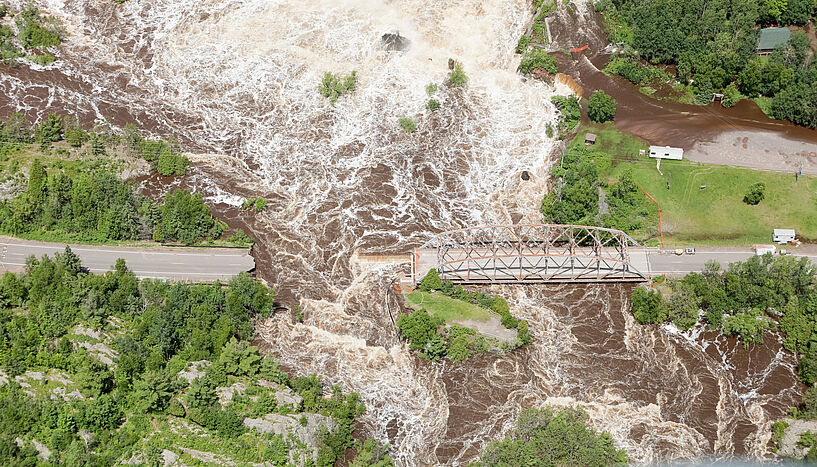Collaboration is making a difference: "Particulate matter is changing our climate"
| 12. Mai 2021
Making a difference: Bernadett Weinzierl and Gerhard Steiner investigate the effect of aerosols on the climate. (© Gerhard Schmolke)
Climate change, particulate matter or COVID-19 – research into tiny aerosols provides the academic foundation for many challenges of our time. In this interview, Bernadett Weinzierl, physicist at the University of Vienna and Gerhard Steiner, University of Vienna alumnus, discuss their joint research at "the limit of measurability".
In a nutshell:
- Research is making a difference: Academic findings provide the foundation for concrete measures.
- In the case of climate research, for example: In the tropics, particles that influence the formation of clouds have a cooling effect on the climate – a yet undiscovered effect that biases the predictions of numerous climate models.
- Research in times of crisis: The extraordinary circumstances in times of crisis often have a positive impact on climate research since before-and-after data can be gathered.
uni:view: Aerosol physics meets industry – what is your cooperation like?
Gerhard Steiner: I am involved in the development of measurement instruments by the GRIMM company, with which tiny airborne particles can be measured. Their measurement instruments can be found, for example, in a desert in Chile, in Kosovo or on board of the German research vessel Meteor. They are also used by the Aerosol Physics and Environmental Physics group of the University of Vienna.
Bernadett Weinzierl: My team at the University of Vienna and I are constantly exchanging ideas with the industry: We use their devices in our research, provide important input for their further development or apply the technology in areas that were initially not intended. For example: Ten years ago, when the Icelandic volcano Eyjafjallajökull erupted, we could quickly react and determine with our measurement devices how much volcanic ash was actually in the air.
Climate research fighting particulate matter
uni:view: Where can you see the influence of your work in your daily life?
Steiner: By measuring the properties of aerosol particles, we can understand the aerosol particle life cycle. The Aerosol Physics and Environmental Physics group at the University of Vienna is currently working on the establishment of a national observatory for urban aerosol measurements as part of the pan-European research infrastructure ACTRIS (Aerosol, Clouds and Trace Gases Research Infrastructure), which will also use our devices that we are going to tune in a joint effort. Although we do not protect the air directly with our work, we provide a basis for decision-makers so that they can take the relevant measures.
Weinzierl: The distribution of aerosols also has an effect on the climate. In cooperation with Harvard University, NASA, NOAA and other US institutions, we have analysed the atmosphere – from the Arctic to the Antarctic – from a research plane for more than three years. In the tropics, we could detect small particles that fall, after originating in high altitudes, and influence the properties of clouds in lower altitudes in the form of condensation nuclei. This influence on the clouds has a cooling effect on the climate: An effect that has not been considered in models so far. Ergo: The actual climate warming is stronger than we previously thought. (More about the measurement flights by the University of Vienna (in German))
Making a difference. Since 1365.
The University of Vienna cooperates with the business world, culture and society in research projects. About 10,000 students graduate from the University of Vienna every year. The University prepares them for a professional career and encourages critical thinking and self-determined decision-making. As part of the thematic focus ‘Making a difference. Since 1365’, we demonstrate the manifold ways in which the University of Vienna contributes to our society.
Climate research during the coronavirus crisis
uni:view: The way aerosols are transported is also relevant for the spread of the coronavirus. How does your research contribute to the questions regarding COVID-19?
Steiner: We cannot say a lot about the coronavirus itself, of course, but we can determine the size of droplets and particles, including virus particles. The duration virus particles spend in the air depends on their size. For example, a 100 nm particle (this approximately corresponds to the size of the coronavirus) needs more than 300 hours to fall 1 metre, whereas a 1,000 nm particle only needs seven and a half hours for the same distance. Measurement devices from aerosol physics were also used, for example, to test the effectiveness of masks or the different materials used in masks.
Weinzierl: On the other hand, the coronavirus crisis also contributed to finding answers to academic questions in our area. For example, due to the decrease in air traffic related to the lockdown, it is possible to collect before-and-after data that allow us to draw conclusions about the air traffic effects. Also in the past, crises led to progress in climate research. After the reactor accident in Chernobyl, the models for the atmospheric transport of air mass were improved. Because the source of radioactive substances that are usually not found in nature was known, the routes of transport could be exactly retraced.
uni:view: How do your students at the University of Vienna benefit from your research's practice orientation?
Weinzierl: Students participate in measuring campaigns and acquire hands-on experiences with state-of-the-art technology. At our biennial Basic Aerosol Science summer school, they meet our partners from industry, international experts in the area of aerosol physics as well as doctoral candidates from other universities. They can network and learn about questions in the area of physics.
Why study Physics at the University of Vienna?
The University of Vienna provides students with a comprehensive basic academic education in the area of physics and its areas of applications. Methods of physics experiments, theoretical description or computational modelling of physical correlations and processes are the everyday business of physics students. As part of Humans of the University of Vienna Sophie explains what studying Physics at the University means to her.
uni:view: How can you resort to your studies at the University of Vienna in your current job?
Steiner: I have the advantage of knowing both sides: academia and the industry. With our devices, we are constantly extending to the limits of measurability. This way, we managed to produce cutting-edge technology to measure particles of a size of 1.1 nanometres or larger. For a comparison, one nanometre corresponds to 1/100,000 of a thin hair. Without my academic education this would of course not have been possible. During my research period at the University of Vienna I dealt with ultrafine particles. Our devices contain a lot of University of Vienna know-how.
uni:view: Thank you very much for the interview. (hm)
Bernadett Weinzierl is Professor of Aerosol- and Cluster Physics, Aerosol Physics and Environmental Physics at the Faculty of Physics at the University of Vienna.
Gerhard Steiner is University of Vienna alumnus and senior scientist at GRIMM Aerosol.




